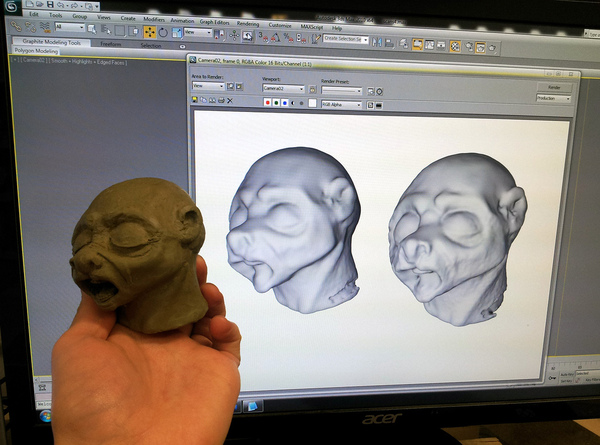Interesting update from the folks making the Photon 3D Scanner. Most interesting from a financial / business perspective, but it gives you an idea about that invisible line where you go from being a motivated ‘maker’ to a legitimate business enterprise.
I think (from a business / career perspective) that it’s cool to have an idea, execute on that idea, and to have it turn into a legitimate business.
From a personal / technical standpoint, I can’t wait to get my scanner and I’m happy that it won’t be a one-off production run that limits software updates, spare parts, and more importantly a user-community (since they plan on open-sourcing (for non-commercial use) this technology).
Most importantly for anyone reading this, the retail price is going up to $599. At last check, there were still 120+ available at the $449 price point, but after they are gone, you are stuck with the $599 price.
I have to say that this scan looks disappointing to me. None of the fine detail are in the 3D model.

I hope the final product can extract more detail.
You know, I actually looked at this, and actually printed the lower-rez version (at 80% size) on my Afinia and was very happy with the result. But now looking at the picture, I can see what you mean.
At this point though, our average printers are not going to be able to print that level of detail unless you are scaling up. Of course, I’m looking at this from a scan-to-print workflow, if you are interested in scanning in items for use in the digital realm (graphics / games, etc) the lack of super-fine details might be a turn-off.
On the other-hand, the beauty of the open-platform is that I would think that it might be possible to have the scanner software (eventually) be able to create texture and bump / displacement maps for use in 3D applications. Just a thought.
I think most desktop printers that came out the last year or so can easily print much more detail than that scan has. I’ve seen an alligator head printed on an ulimaker and you can see each tiny scale.
Personally, I haven’t printed anything super detailed yet, but the stuff I’ve seen hasn’t particularly blown me away. Hopefully the software for the Photon improves, though I can see limits to “scanning” as a whole. For instance, getting details of the closed eye-lid on the example head might be problematic even if the laser / camera were pointed upwards because the cheek would occlude the bottom part of the eyelid a little.
It will be interesting (a year from now) to be able to compare the results of various 3D scanners and to see which method works the best, and where the limits of scanning itself come into play.
